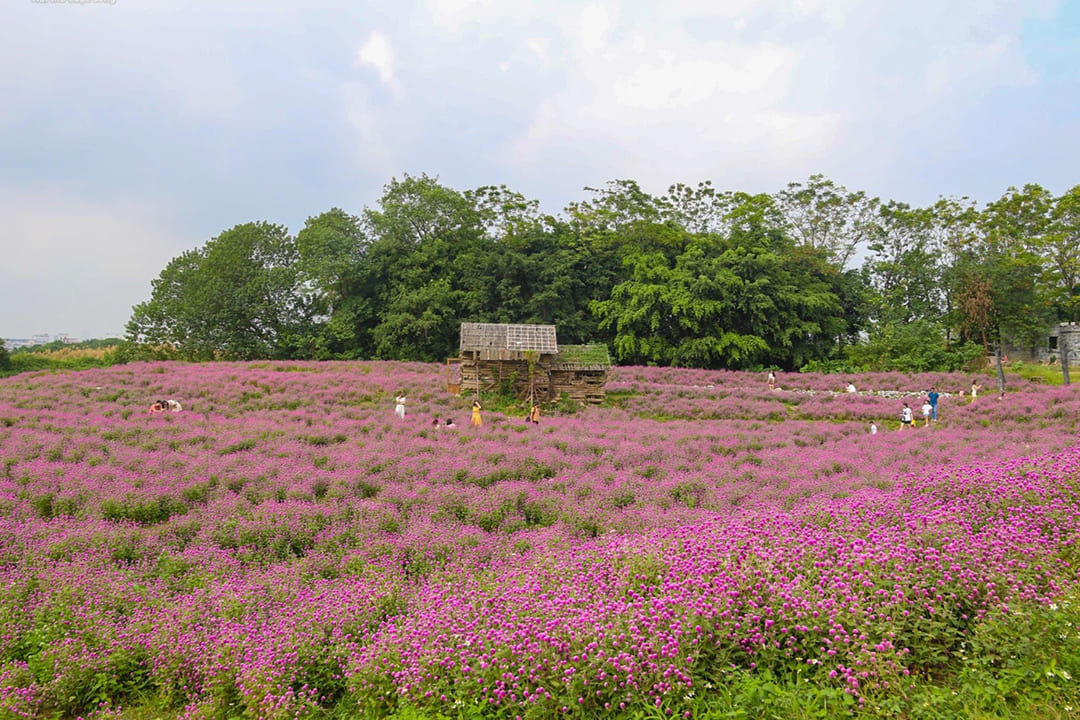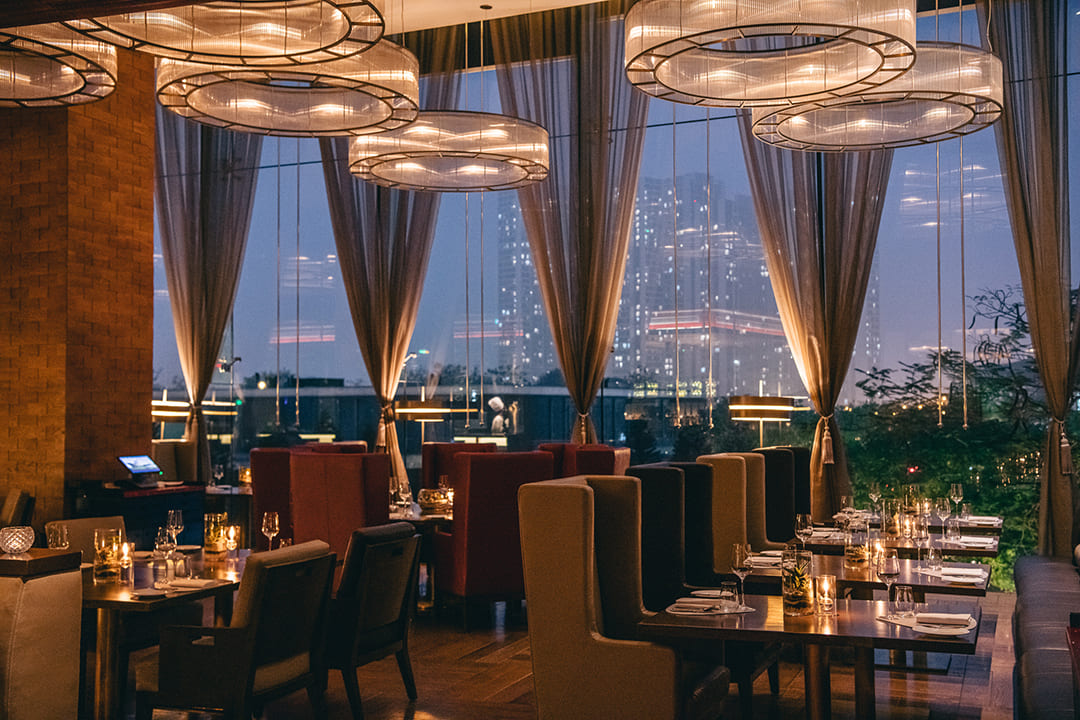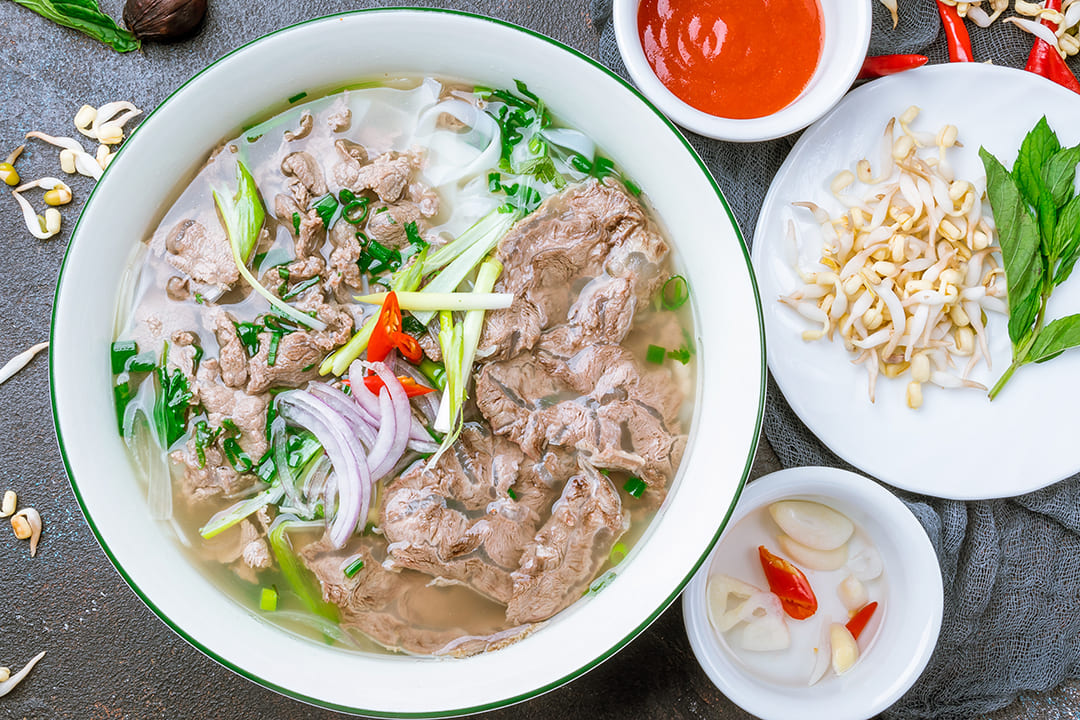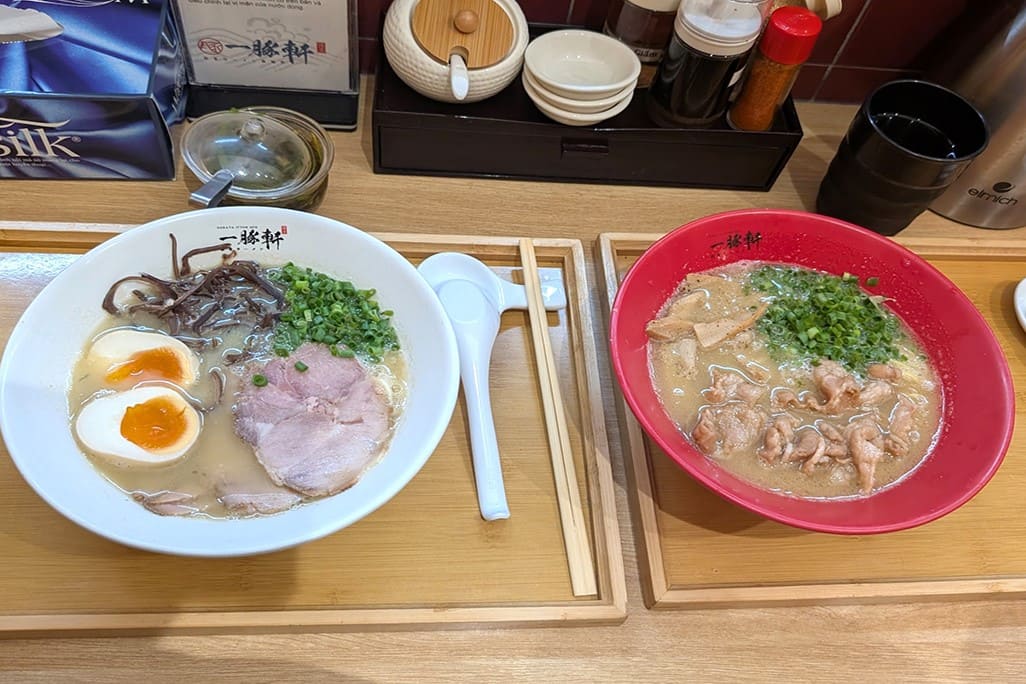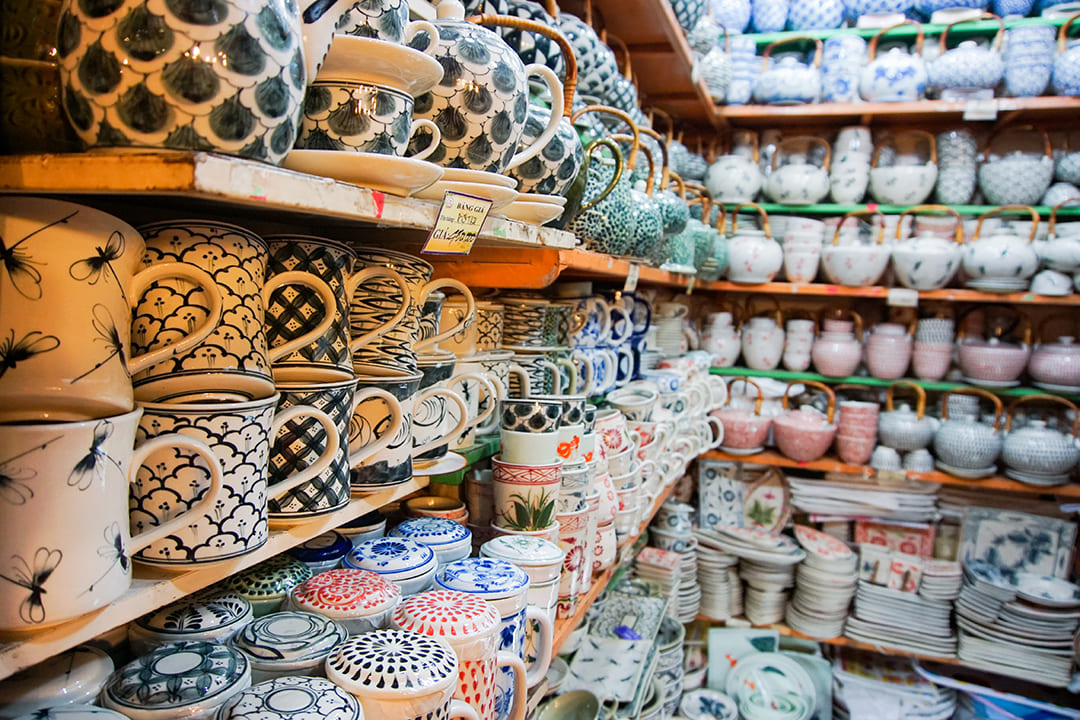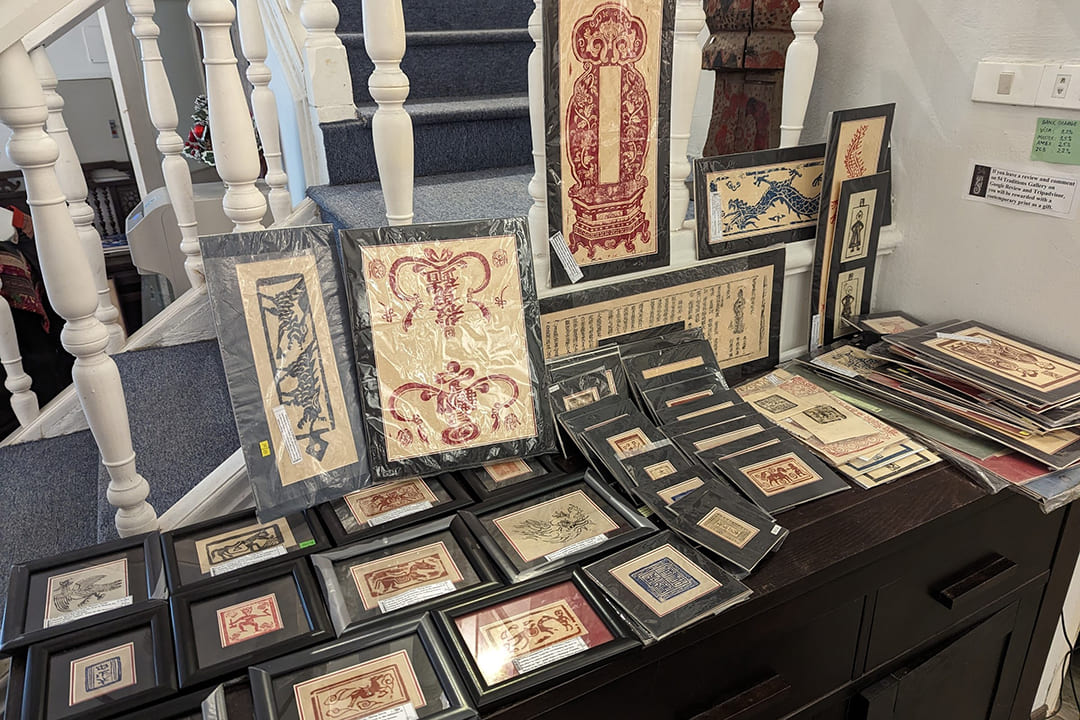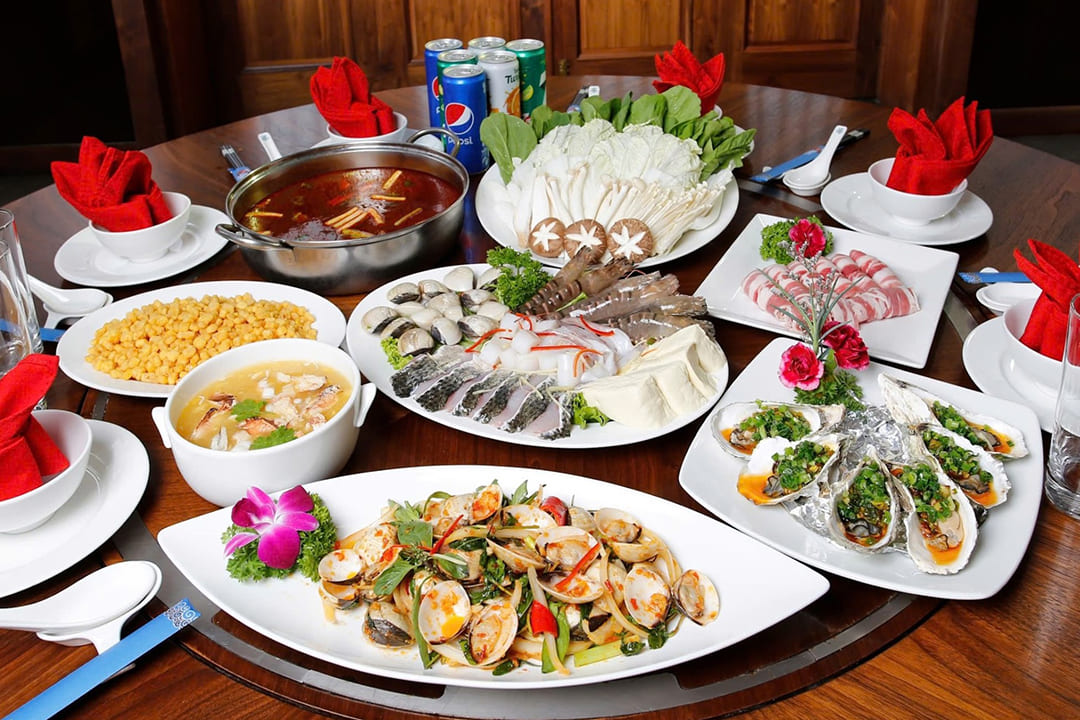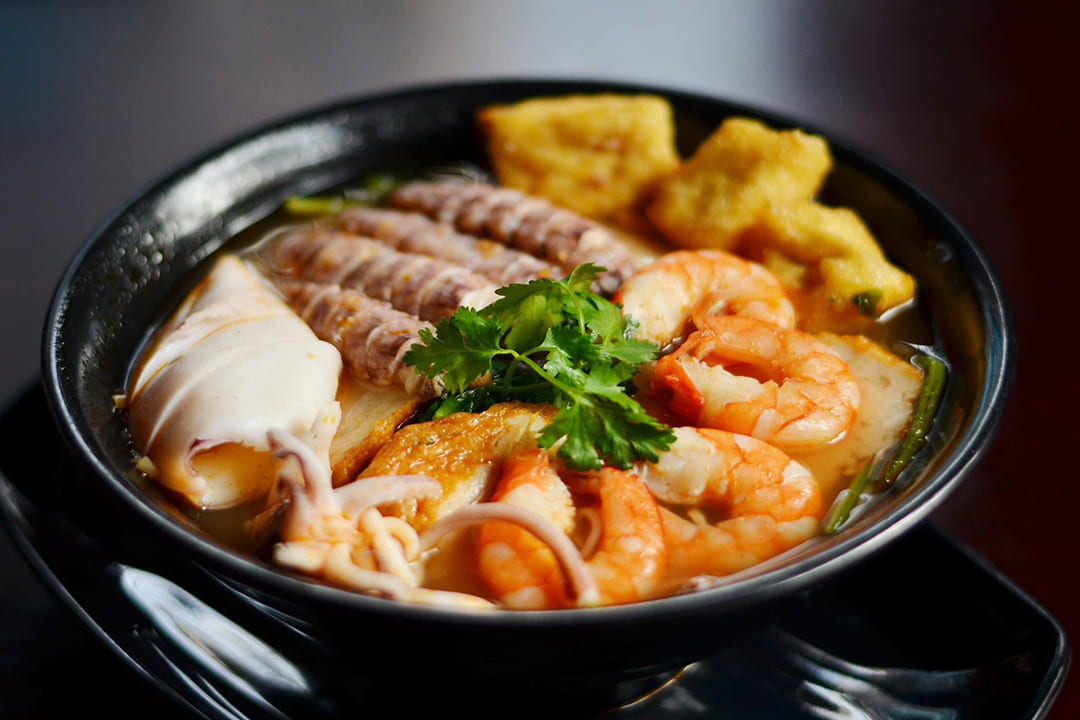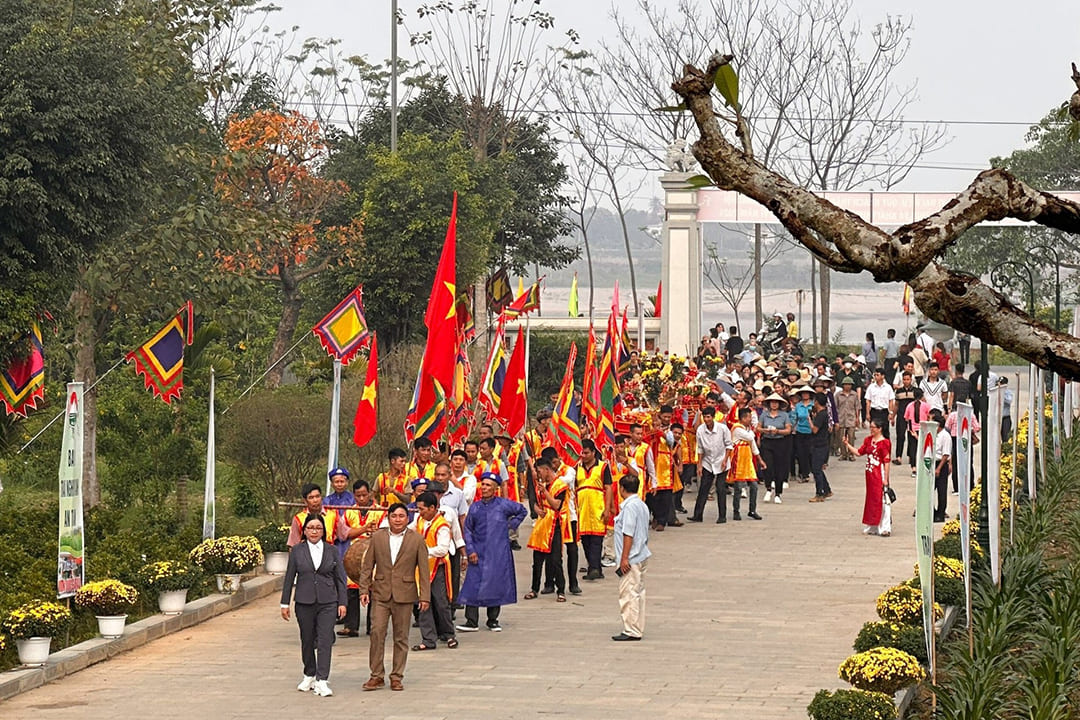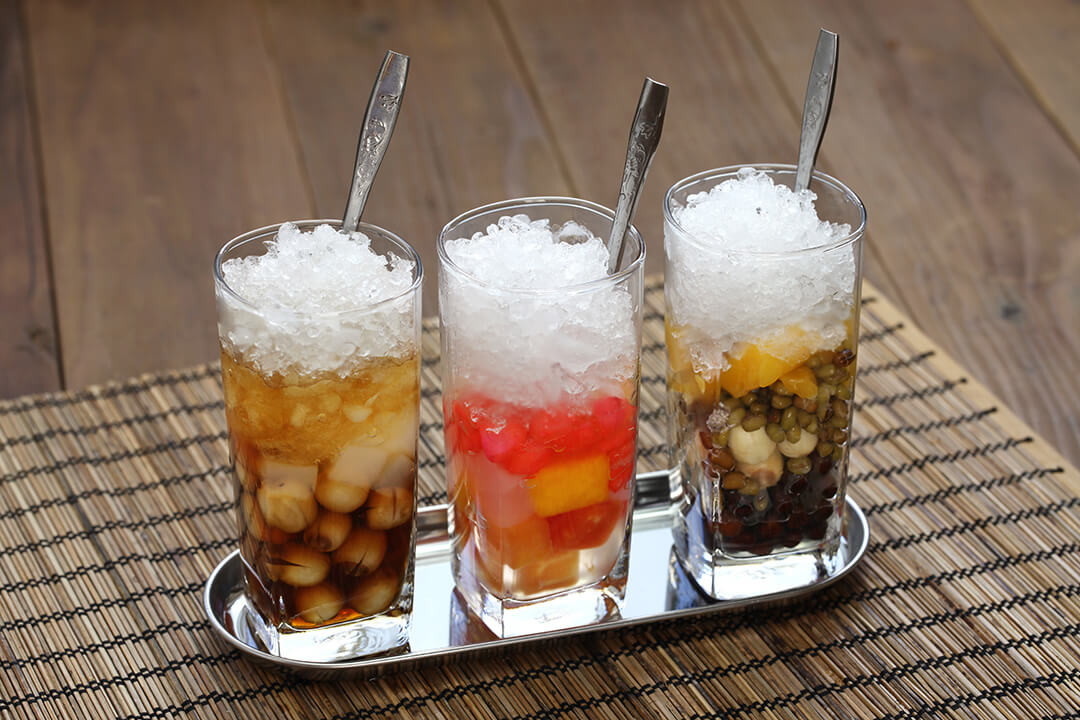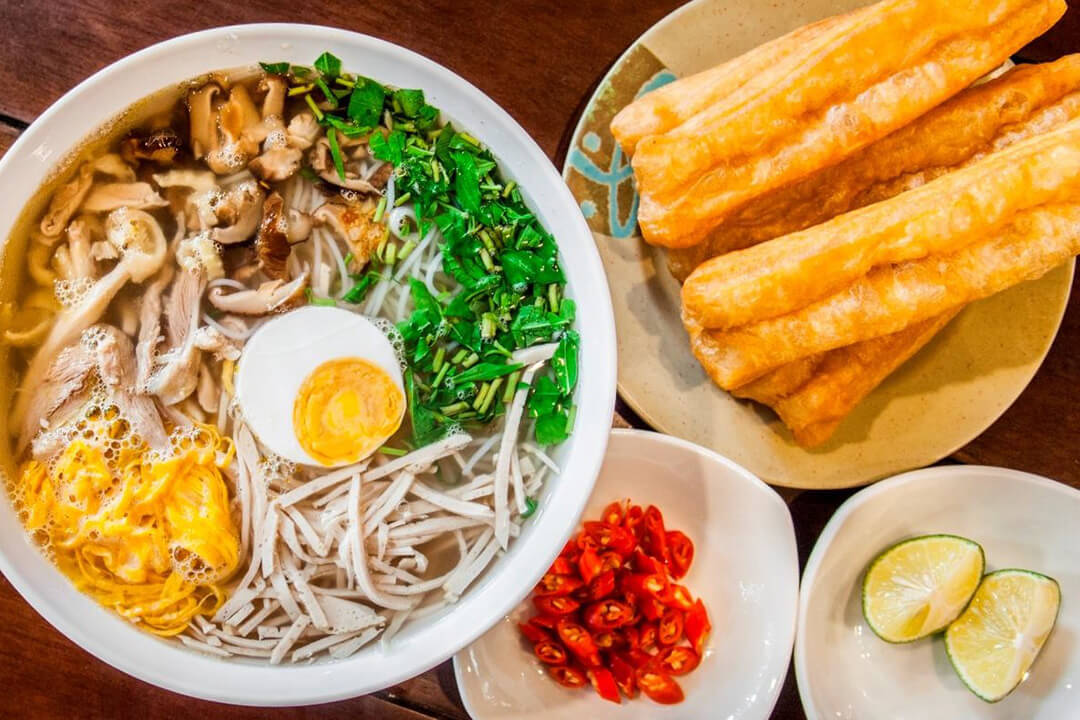Oct - 02 - 2025
Craft villages in Hanoi offer a captivating journey into the heart of Vietnam's rich cultural heritage and artisanal history. Stepping away from the city's bustling streets, these villages preserve centuries-old traditions, allowing you to witness masterful techniques passed down through generations. This comprehensive guide of GTrip provides everything you need to know to explore these incredible hubs of creativity. Now prepare to discover the authentic soul of Hanoi.
1. Bat Trang Pottery Village - The most famous pottery craft village in Hanoi
Location: Bat Trang Commune (formerly Bat Trang Commune, Gia Lam District), Hanoi
For over 700 years, Bat Trang Pottery Village has been the epicenter of Vietnamese ceramics. As one of the most famous craft villages in Hanoi, a visit here is a dive into a world of clay, fire, and incredible artistry. The village is renowned for its exquisite pottery and ceramics, made from rich local clay and distinguished by its durability and intricate designs. As you wander through the narrow alleys, you'll see family-run workshops where artisans meticulously shape, paint, and glaze each piece by hand.
Many workshops offer hands-on experiences where you can try your hand at the potter's wheel and create your own souvenir. The village also features a large, well-organized market showcasing countless ceramic products, making it one of the best places to buy ceramics in Hanoi. A trip to Bat Trang is a perfect day excursion from Hanoi to witness a living tradition and bring home a truly authentic piece of Vietnamese craftsmanship.
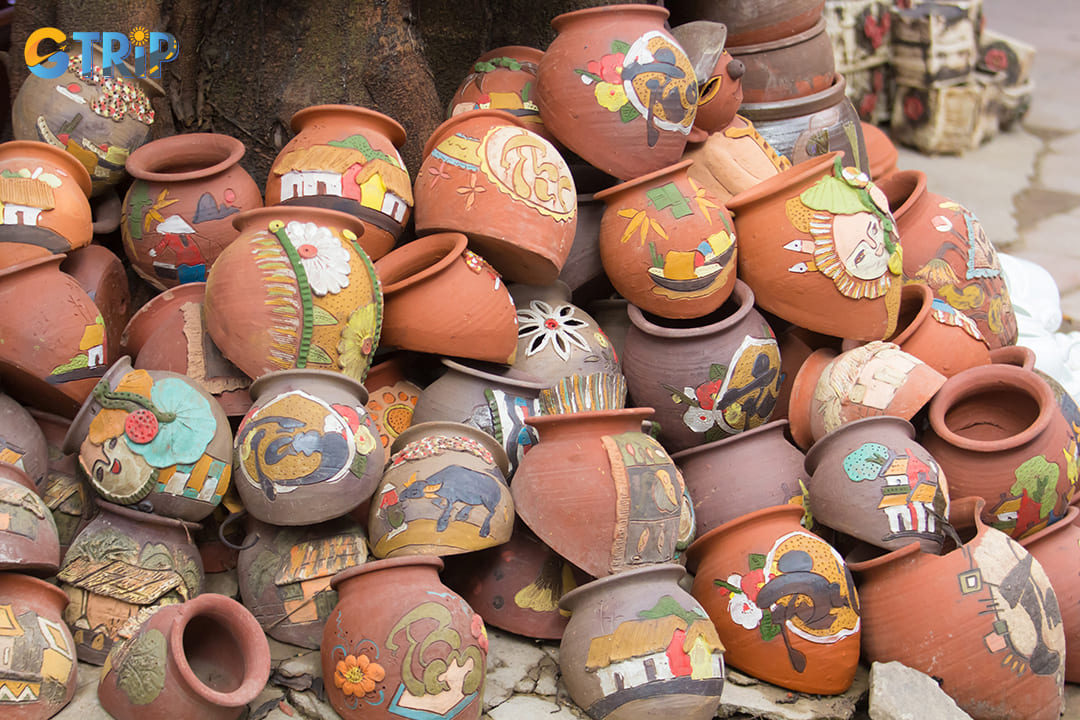
Bat Trang Ceramic Village is a 700-year-old hub of Vietnamese pottery, where visitors can explore workshops, try pottery-making, and shop for unique ceramics
2. Van Phuc Silk Village - The best-known silk-weaving village in Hanoi
Location: Ha Dong Ward (formerly Van Phuc Ward, Ha Dong District), Hanoi
Van Phuc Silk Village is synonymous with luxury, celebrated for producing Vietnam's most famous high-quality silk for over a thousand years. Located on the banks of the Nhue River, this ancient village has supplied silk to royalty and merchants for generations. The star of Van Phuc is its traditional silk, known as Van Silk, which is lightweight, smooth, and exceptionally elegant. Walking through the village, you'll hear the rhythmic clacking of looms from workshops where skilled weavers transform shimmering threads into beautiful fabrics.
The village is essentially a large, vibrant market filled with shops selling a stunning array of silk goods, including traditional ao dai (Vietnam's national costume), elegant scarves, tailored suits, ties, and home decor. Visiting Van Phuc offers more than just a shopping trip. It's an opportunity to learn about the entire silk-making process, from silkworm cultivation to the final weave, and appreciate the immense skill behind this timeless art form.
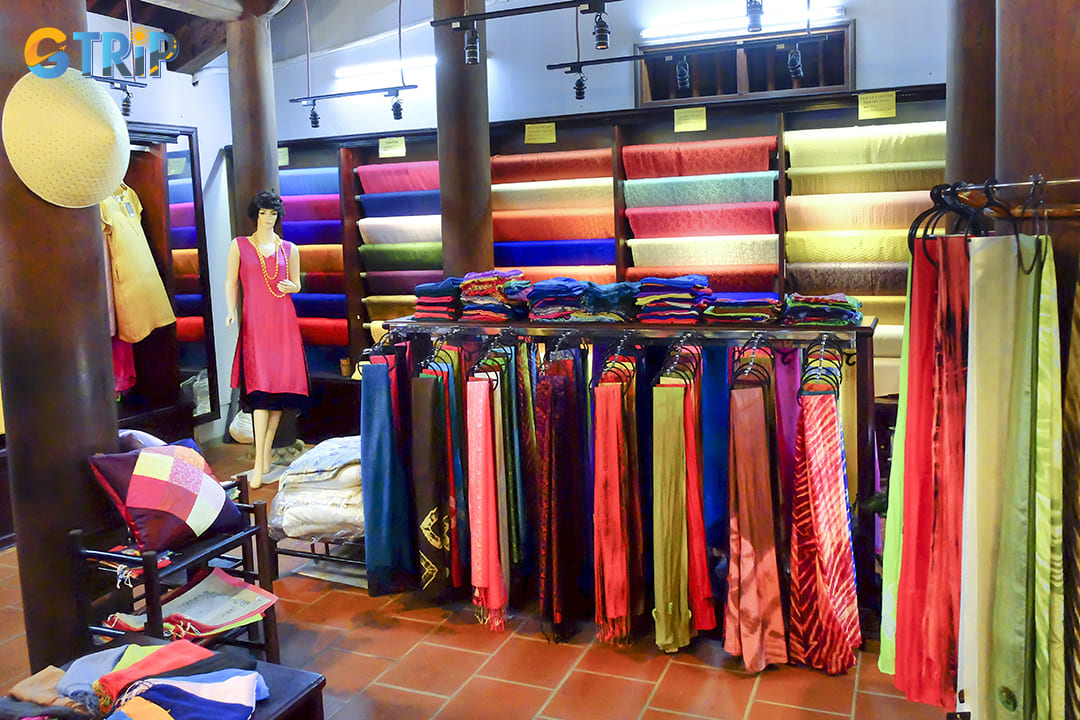
Van Phuc Silk Village has produced Vietnam’s finest silk for over 1,000 years, offering elegant fabrics, vibrant markets, and a glimpse into traditional weaving
3. Quang Phu Cau Incense Village - One of the most colorful craft villages in Hanoi
Location: Ung Thien Commune (formerly Quang Phu Cau Commune, Ung Hoa District), Hanoi
A visit to Quang Phu Cau is an experience for the senses, especially for photographers and culture lovers. This village is famous for producing the vibrant, fragrant incense sticks used in temples and homes across Vietnam. What makes it spectacular are the vast, open courtyards where thousands of freshly dyed incense bundles are left to dry in the sun. The "bouquets" of bamboo sticks, dyed bright red, pink, and yellow, create a breathtaking visual against the sky. It's a surreal and beautiful scene that has become an iconic image of northern Vietnam.
For generations, families in Quang Phu Cau have perfected the art of incense making. You can observe the entire process, from splitting the bamboo and making the aromatic paste to dyeing the sticks and arranging them to dry. The air is filled with the pleasant, woody aroma of sandalwood and other natural ingredients. A trip here, especially on a sunny day, rewards you with unforgettable photos and a deep appreciation for this spiritual craft.
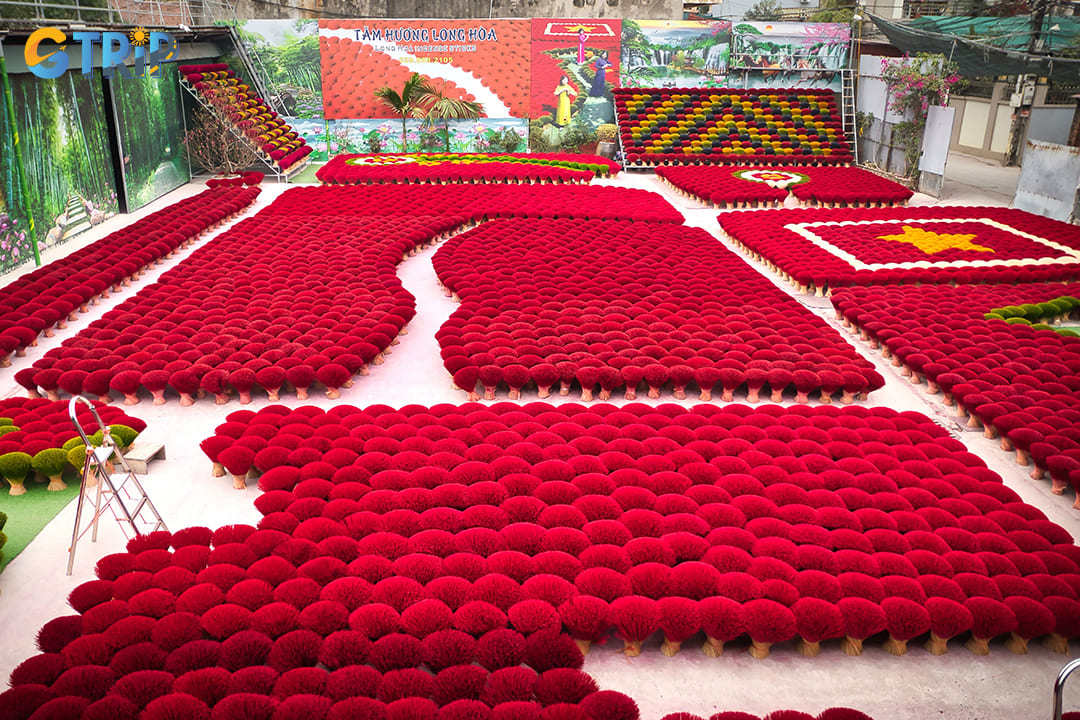
Quang Phu Cau Incense Village dazzles with vibrant courtyards of drying incense sticks, offering stunning photo opportunities and insight into a centuries-old craft
4. Quat Dong Embroidery Village - The cradle of Vietnamese hand embroidery
Location: Thuong Phuc Commune (formerly Quat Dong Commune, Thuong Tin District), Hanoi
Quat Dong is revered as the birthplace of Vietnamese hand embroidery, a delicate art form that has flourished here for over 400 years. The village's reputation is built on the incredible skill of its artisans, who use needles and colorful threads to create intricate and lifelike embroidered artworks. Legend says the craft was brought to the village by Le Cong Hanh, a royal envoy who learned the technique in China and taught it to his home village. Today, he is honored as the master ancestor of Vietnamese embroidery.
Walking through Quat Dong, you can visit workshops and watch as artisans patiently work on their creations. Their subjects range from traditional motifs like dragons, phoenixes, and lotus flowers to stunningly realistic portraits and landscapes. The level of detail and precision is mesmerizing. The village produces a wide variety of embroidered items, such as wall hangings, decorative paintings, tablecloths, and custom-made apparel. Visiting Quat Dong offers a quiet, fascinating glimpse into an art form that demands immense patience and artistic vision.
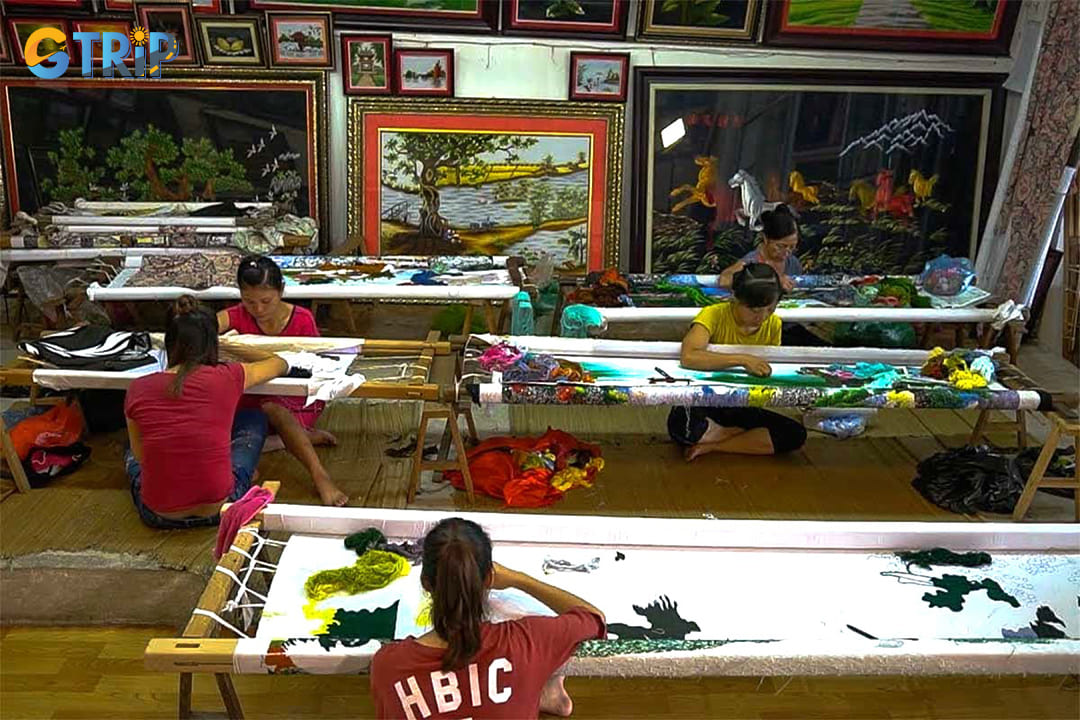
Quat Dong Embroidery Village is the cradle of Vietnamese hand embroidery, where artisans craft intricate artworks from colorful threads with centuries-old skill
5. Phu Vinh Bamboo & Rattan Village - Renowned for bamboo and rattan weaving
Location: Go Dau, Phu Nghia Commune (formerly Chuong My District), Hanoi
Phu Vinh is a testament to the versatility and beauty of natural materials, having mastered the art of bamboo and rattan weaving over the past 400 years. This village has earned national and international acclaim for its sophisticated and durable woven products. The artisans of Phu Vinh possess a remarkable ability to transform simple strands of bamboo and rattan into complex and functional works of art. Their techniques, passed down through generations, allow them to create everything from everyday household items to high-end decorative pieces.
As you explore Phu Vinh, you'll see artisans splitting, polishing, and weaving the materials with incredible speed and precision. The village is filled with workshops and showrooms displaying a vast array of products, including baskets, furniture, lampshades, trays, and intricate portraits woven from tiny rattan strands. The creativity is boundless. A trip to Phu Vinh is a fantastic opportunity to appreciate eco-friendly craftsmanship and purchase unique, handmade items that embody the rustic charm and ingenuity of rural Vietnam.
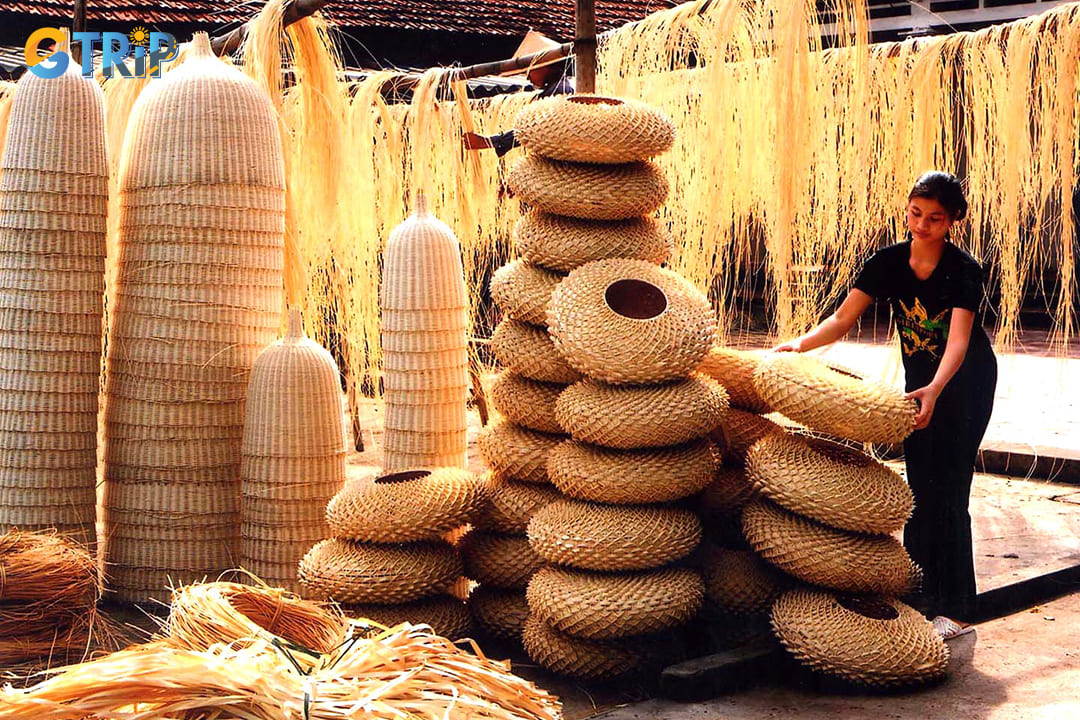
Phu Vinh Bamboo and Rattan Village showcases 400 years of craftsmanship, where artisans weave eco-friendly baskets, furniture, and intricate decorative art
6. Dao Thuc Water Puppet Village - A 300-year-old village famous for traditional puppetry
Location: Thu Lam Commune (formerly Dong Anh District), Hanoi
Step into a world of folklore and magic at Dao Thuc, a village that has kept the enchanting tradition of Vietnamese water puppetry alive for over 300 years. Unlike other craft villages that produce physical goods, Dao Thuc’s craft is performance. Water puppetry is a unique art form where puppets perform on a "stage" of water, controlled by puppeteers hidden behind a screen. The performances tell stories of Vietnamese rural life, historical legends, and mythical creatures, often with a humorous and charming twist.
The Dao Thuc troupe is one of the most famous in Vietnam, and the village has its own open-air stage where they hold regular performances. The puppets, carved from fig wood, appear to dance, skim, and dive across the water, all set to the sounds of live traditional music. Visiting the village, you can not only watch a show but also go behind the scenes to see the puppets up close and learn about the secret mechanisms that bring them to life from the master puppeteers themselves.
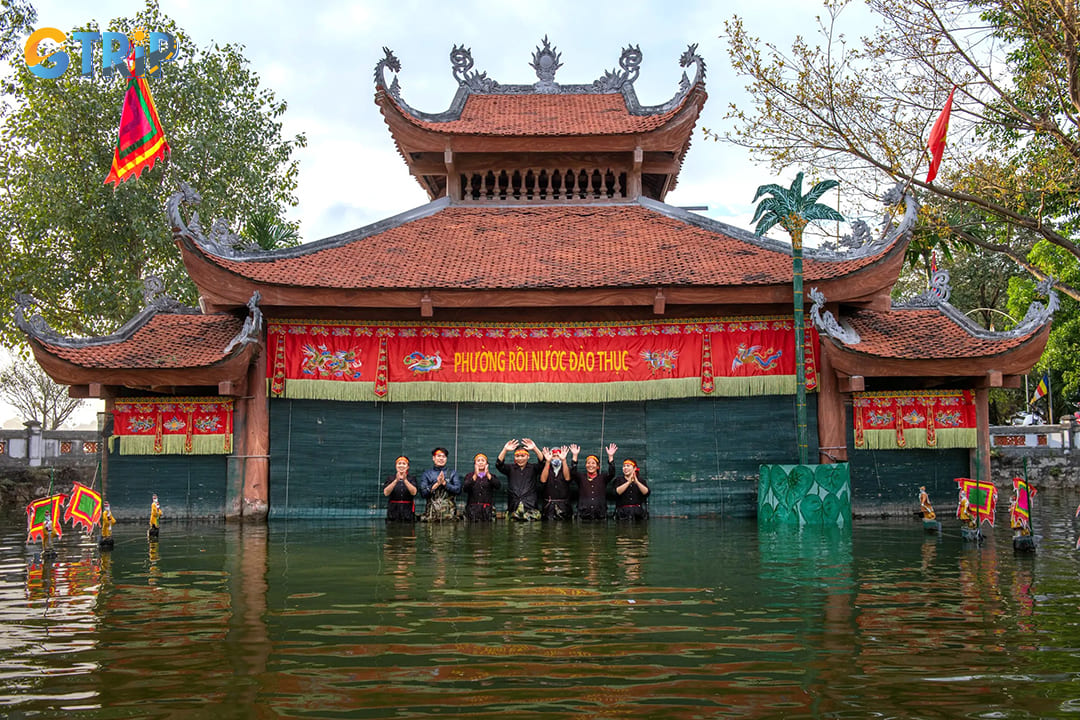
Dao Thuc Water Puppetry Village preserves a 300-year-old art, where wooden puppets dance on water to live music in magical folklore performances
7. Chuong Conical Hat Village - A must-visit for Vietnam’s iconic conical hats
Location: Lang Chuong Street, Thanh Oai Commune (formerly Phuong Trung Commune, Thanh Oai District), Hanoi
The Non La, or conical hat, is an enduring symbol of Vietnam, and Chuong village is one of the most famous places where this national icon is made. This craft has been the heart and soul of the village for over three centuries. The traditional conical hat is more than just headwear; it’s a practical tool that protects farmers from the sun and rain, a cultural symbol, and a piece of art. Artisans in Chuong village are masters of their craft, using simple materials like palm leaves, bamboo, and silk thread to create these lightweight yet durable hats.
The village market day, held on the 4th, 10th, 14th, 20th, 24th, and 30th of each lunar month, is the best time to visit. The market becomes a sea of white conical hats, with villagers from surrounding areas coming to buy and sell. You can see every step of the hat-making process, from flattening the palm leaves to meticulously stitching them onto the bamboo frame. It's a fascinating and authentic cultural experience, and you can buy a beautiful, handmade Non La directly from its maker.
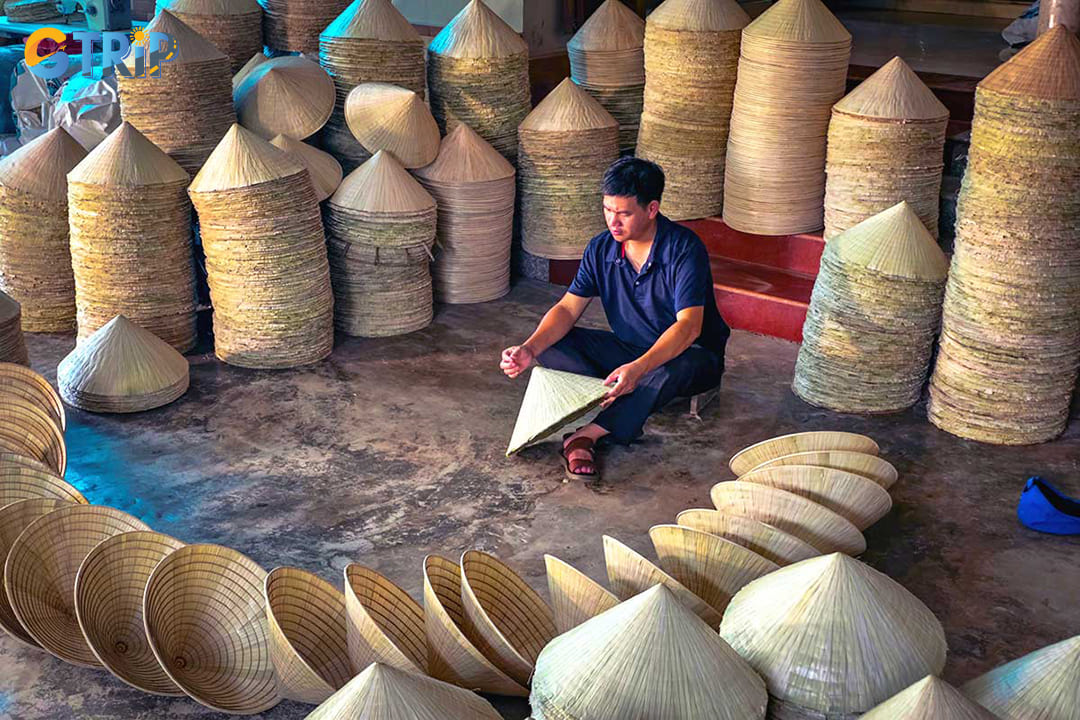
Chuong Conical Hat Village has crafted Vietnam’s iconic Non La for over 300 years, offering market days to witness and buy handmade hats
8. Ngu Xa Bronze Casting Village - Known for traditional bronze casting
Location: Ngu Xa Street, Ba Dinh Ward (formerly Ba Dinh District), Hanoi
Nestled in a small peninsula on Truc Bach Lake, Ngu Xa is a historic village known for its mastery of traditional bronze casting. While the craft has declined in modern times, its legacy is monumental. The village’s history dates back to the 15th century, when artisans from five different villages (Ngu Xa means "five villages") were brought to the capital to cast money and weapons for the royal court. They eventually became famous for casting magnificent bronze statues and ceremonial objects.
The most famous masterpiece from Ngu Xa is the giant statue of Buddha Amitabha at the Tran Quoc Pagoda, which was cast in 1679 and weighs over ten tons. While there are fewer active foundries today, you can still find workshops that uphold the ancient techniques. Visiting Ngu Xa offers a glimpse into a powerful and historically significant craft. You can see some remaining workshops, visit the village temple dedicated to the craft's founder, and admire the bronze statues that stand as a testament to the artisans' incredible skill.
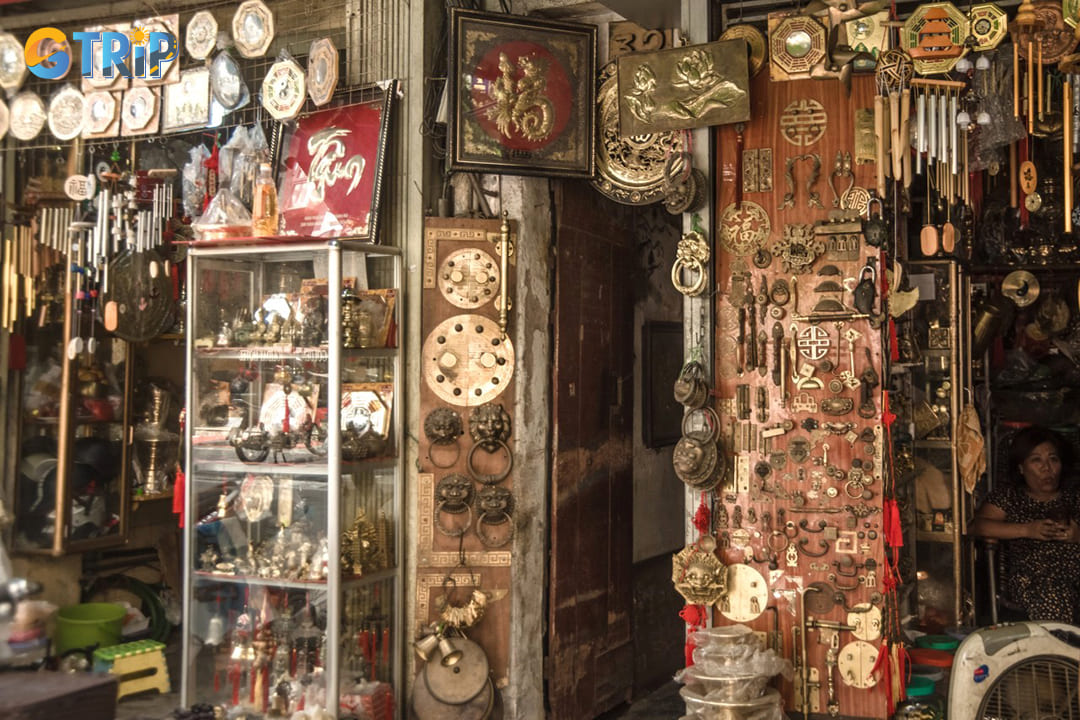
Ngu Xa Bronze Casting Village on Truc Bach Lake dates back to the 15th century, famed for monumental works like the 10-ton Amitabha Buddha at Tran Quoc Pagoda
9. Dinh Cong Jewelry Village - The pride of Hanoi with gold and silver craftsmanship
Location: Dinh Cong Ward (formerly Hoang Mai District), Hanoi
Dinh Cong is a legendary craft village celebrated for its exquisite gold and silver jewelry craftsmanship. With a history spanning over a thousand years, this is one of the oldest traditional craft villages in Hanoi. The artisans of Dinh Cong are renowned for their mastery of filigree, a delicate technique that involves drawing metal into thin wires and twisting them into intricate patterns, resembling fine lace. This highly skilled process requires immense patience and a steady hand.
The traditional products of Dinh Cong are not just accessories but works of art, featuring detailed motifs of dragons, phoenixes, and flowers. Local families have passed down their secrets through generations, ensuring the survival of this sophisticated craft. While the area has become more urbanized, you can still find families dedicated to creating stunning jewelry pieces, such as earrings, bracelets, necklaces, and pendants. A visit to Dinh Cong provides a unique opportunity to witness this meticulous art form and acquire finely crafted silver or gold jewelry directly from the artisans.
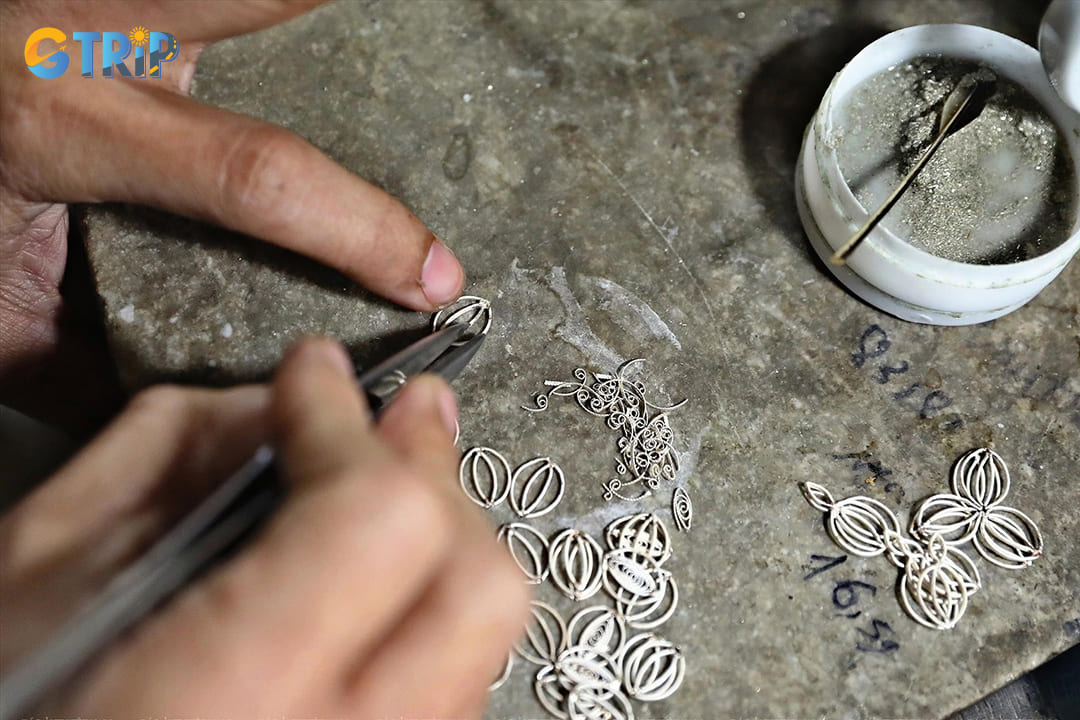
Dinh Cong Jewelry Village has crafted gold and silver masterpieces for over 1,000 years, famed for intricate filigree and timeless handmade designs
10. Chang Son Fan Village - Famous for hand-crafted wooden fans
Location: Thach That Commune (formerly Chang Son Commune, Thach That District), Hanoi
For over 200 years, Chang Son village has been the center of a beautiful and practical art form: hand-crafted fans. Far more than simple cooling devices, the fans from Chang Son are intricate pieces of art used in homes for decoration, in traditional performances, and as meaningful souvenirs. The artisans here create a wide variety of fans, using materials like bamboo, wood, paper, and silk. Each fan is a product of many meticulous steps, from splitting the bamboo and whittling the frames to painting or embroidering the fan's surface.
The village produces many types of fans, including paper fans for daily use, silk fans for performances, and large decorative wall fans. The paintings on the fans are particularly noteworthy, often depicting serene Vietnamese landscapes, folk stories, or elegant calligraphy. Walking through Chang Son, you can see families working together, with each member specializing in a different stage of the fan-making process. It is a wonderful place to see how a simple object can be elevated into a beautiful expression of culture and artistry.
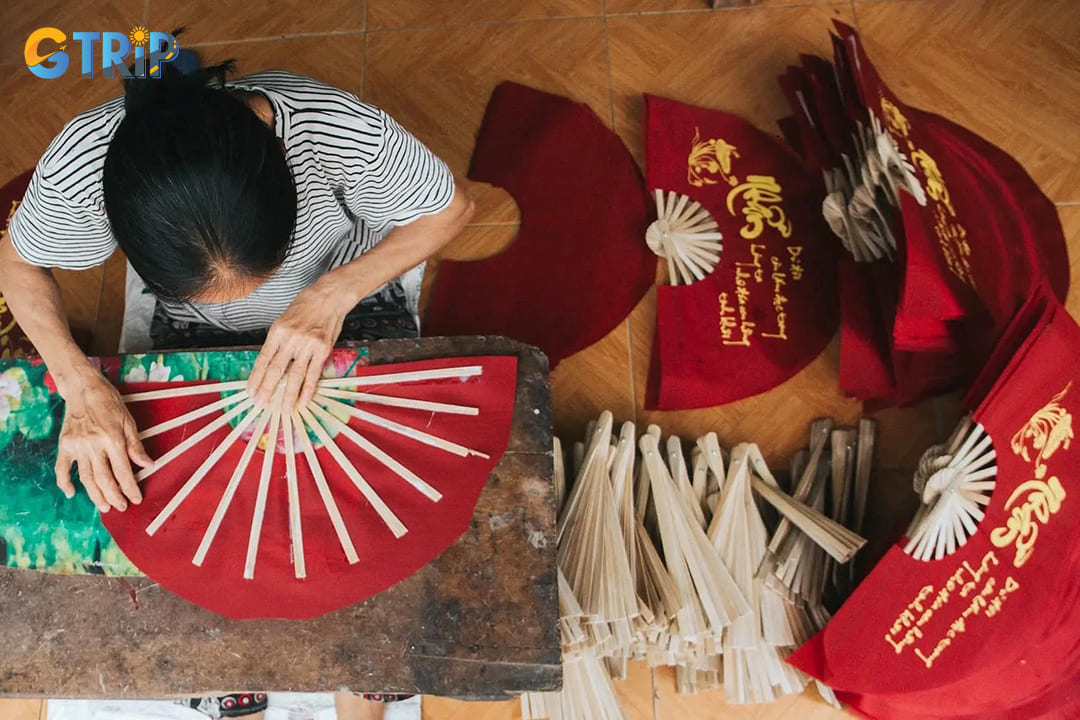
Chang Son Fan Village near Hanoi has crafted hand-made bamboo, silk, and paper fans for over 200 years, blending utility with artistry in elegant designs
11. Dao Xa Musical Instrument Village - Specializes in ceremonial string instruments
Location: Dao Xa Village, Ung Hoa Commune (formerly Dong Lo Commune, Ung Hoa District), Hanoi
Dao Xa is a village that lives and breathes music. For over 200 years, it has been renowned for creating traditional Vietnamese musical instruments. They are particularly string instruments like the dan bau (monochord), dan day (long-necked lute), and dan nguyet (moon-shaped lute). This unique craft village in Hanoi has been passed down through generations of the Dao family, and today the artisans of Dao Xa provide instruments for musicians and orchestras across the country.
Visiting this village is a feast for the ears and the eyes. You can hear the sounds of instruments being tuned and tested as you walk by the workshops. The artisans are true masters, meticulously selecting the right wood, stretching the strings, and shaping the bodies of the instruments to produce the perfect sound. They possess a deep, intuitive understanding of both woodworking and acoustics. Seeing them at work provides a profound appreciation for the craftsmanship behind Vietnam's soulful traditional music. It's a rare opportunity to connect with the roots of the nation's musical heritage.
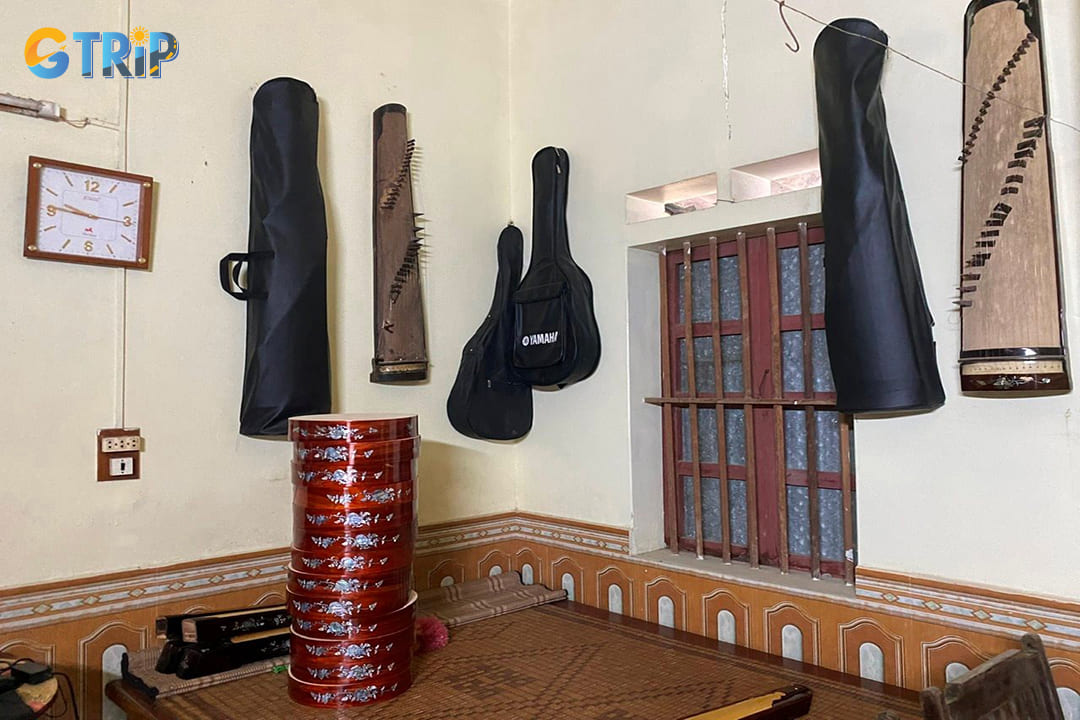
Dao Xa Village has crafted traditional Vietnamese instruments like the dan bau and dan nguyet for over 200 years, preserving a rich musical heritage
12. Cu Da Vermicelli Village - A 400-year-old food craft village
Location: Phu Luong Ward (formerly Cu Khe Commune, Thanh Oai District), Hanoi
Unlike villages crafting keepsakes, Cu Da offers a taste of tradition. This ancient village, with its well-preserved French colonial-era houses and traditional architecture, is famous for producing high-quality rice vermicelli (mien) and soy sauce. For over 400 years, families here have been perfecting the art of making mien, a type of glass noodle made from canna starch. The craft is a community affair, and the sight of the village is truly unique.
On sunny days, the village lanes and courtyards are covered with golden-yellow racks of vermicelli drying in the open air. The long, shimmering strands create a beautiful and photogenic scene that contrasts with the old village walls. The process is entirely handmade, from grinding the starch and steaming the noodle sheets to cutting and drying them. The resulting vermicelli is known for its chewy texture and superior flavor. A walk through Cu Da offers a fascinating glimpse into a traditional food craft, blending culinary heritage with architectural beauty.
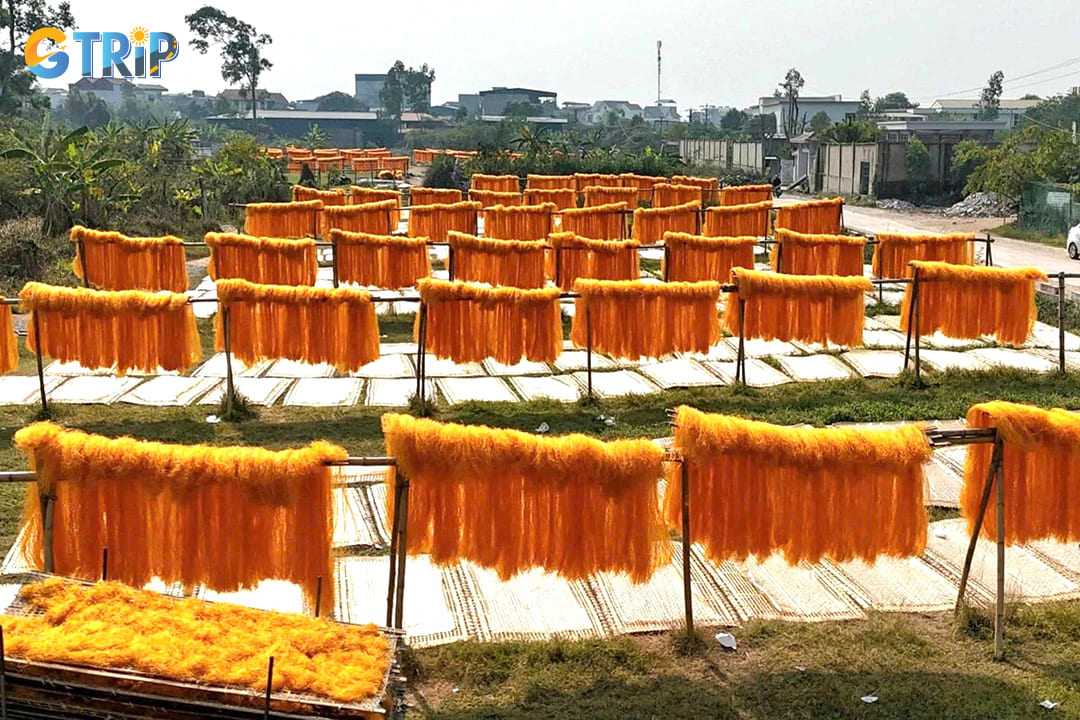
Cu Da Ancient Village is famed for handmade rice vermicelli and soy sauce, where sun-dried noodles shimmer against French colonial-era houses
13. Thach Xa Bamboo Dragonfly Village - Where childhood gifts are created
Location: At the foot of Tay Phuong Mountain, Tay Phuong Commune, Hanoi
Thach Xa is a village that will transport you straight back to childhood. It is famous for a simple yet magical creation: the balancing bamboo dragonfly. These whimsical toys are a marvel of physics and craftsmanship. Carved from bamboo, they are so perfectly balanced that they can perch on the tip of your finger, a chopstick, or any pointed surface, gently swaying in the breeze without falling. They are a beloved souvenir for both children and adults.
The craft is relatively new compared to others but has become the village's identity. Families work together to create these delightful toys. The process involves splitting bamboo, carving the body and wings, and meticulously adjusting the weight and balance until it is perfect. They are then painted in a vibrant array of colors and patterns. Visiting Thach Xa, located at the foot of the scenic Tay Phuong Pagoda, is a charming and lighthearted experience. You can see thousands of these colorful dragonflies seemingly floating in the air at workshops, ready to bring a touch of joy and wonder back home with you.
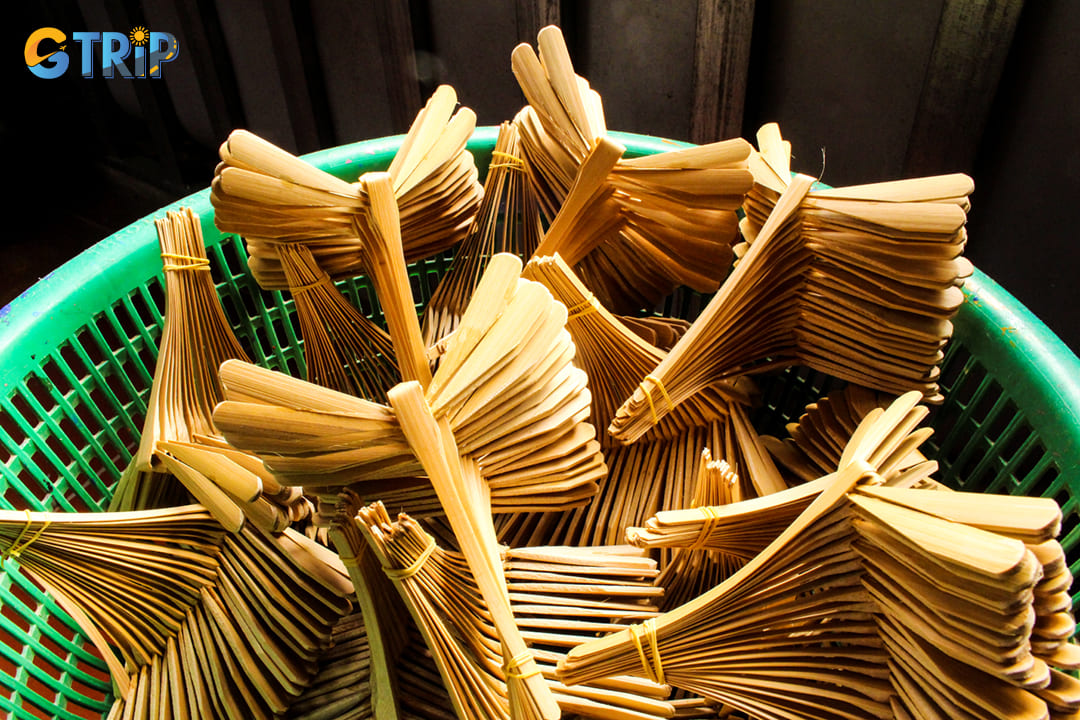
Thach Xa Village near Tay Phuong Pagoda is famed for its balancing bamboo dragonflies, colorful toys that showcase playful craftsmanship and perfect balance
Read more:
The craft villages in Hanoi are more than just destinations. They are living museums that offer an unparalleled connection to Vietnamese history and culture. Each village tells a unique story of skill, community, and perseverance. By visiting, you not only get the chance to purchase authentic, handmade souvenirs but also support the local artisans who are keeping these invaluable traditions alive. These villages provide a peaceful and enriching escape from the city, revealing a slower, more deliberate way of life. For any traveler seeking an authentic and memorable experience, exploring the craft villages in Hanoi is an absolute must. Plan your GTrip adventure today and discover the creative soul of Vietnam.

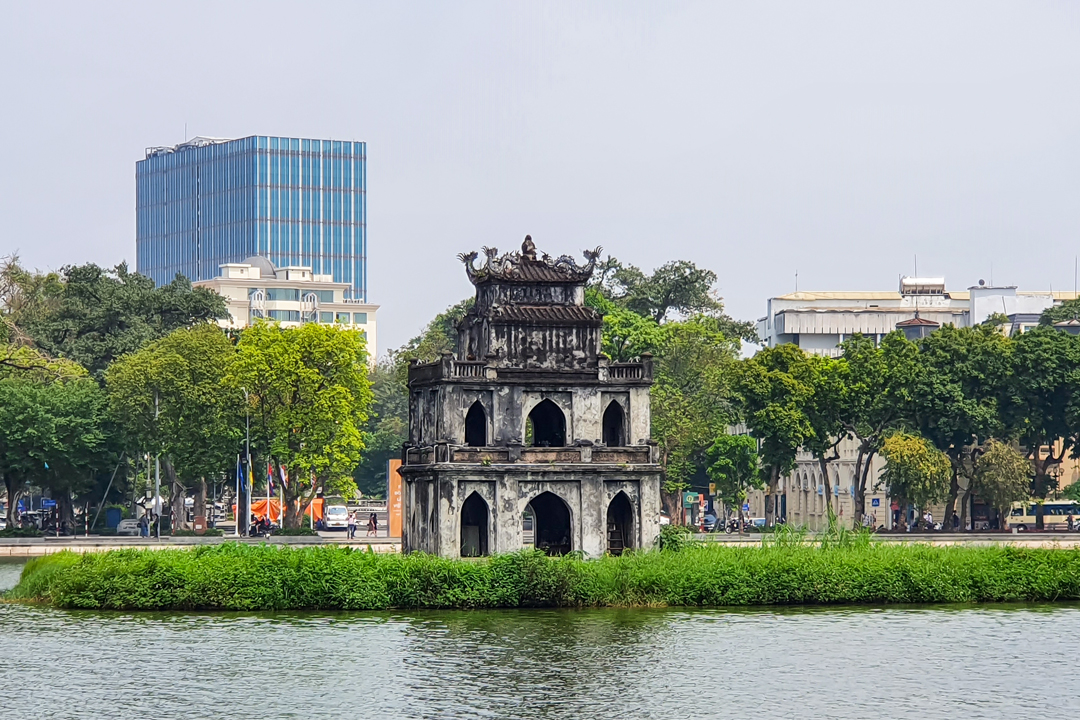

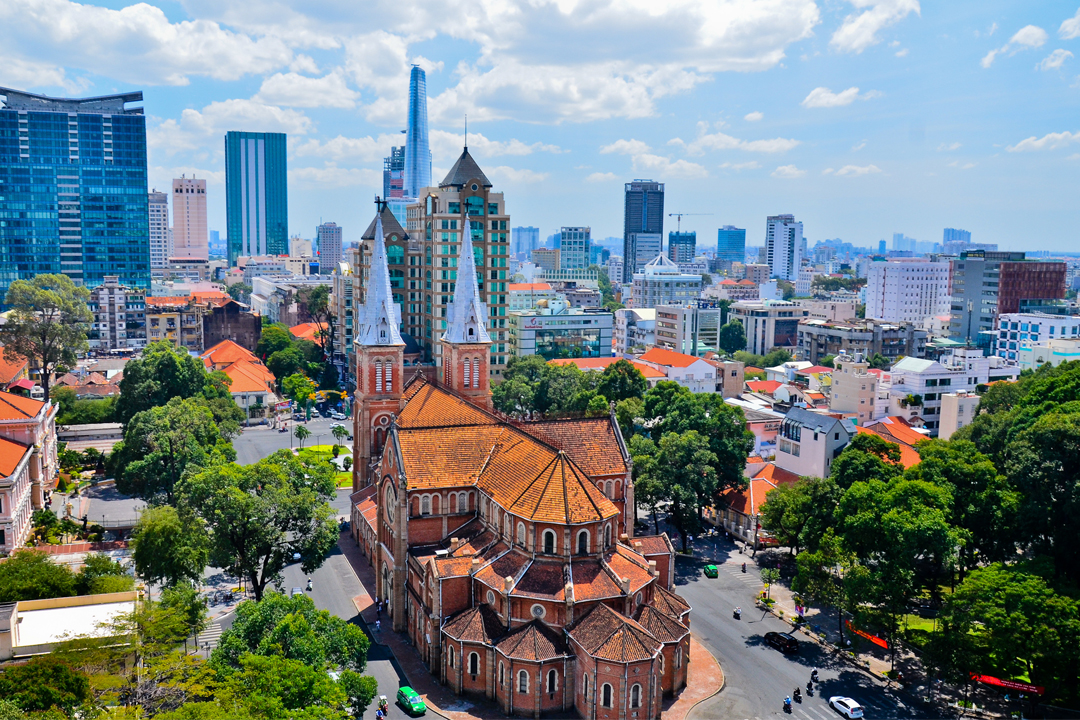

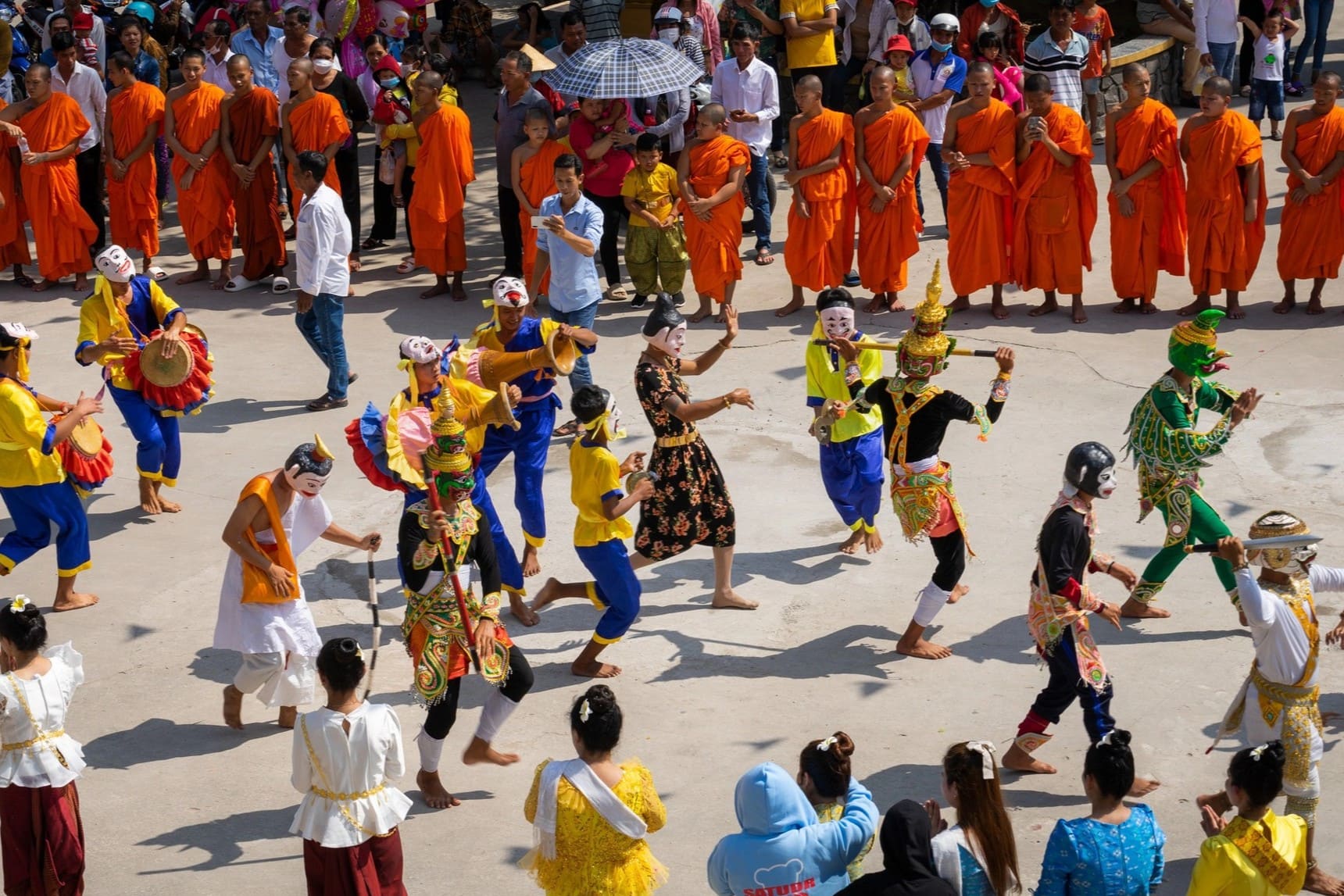



-1759546825r84CS.jpg)
